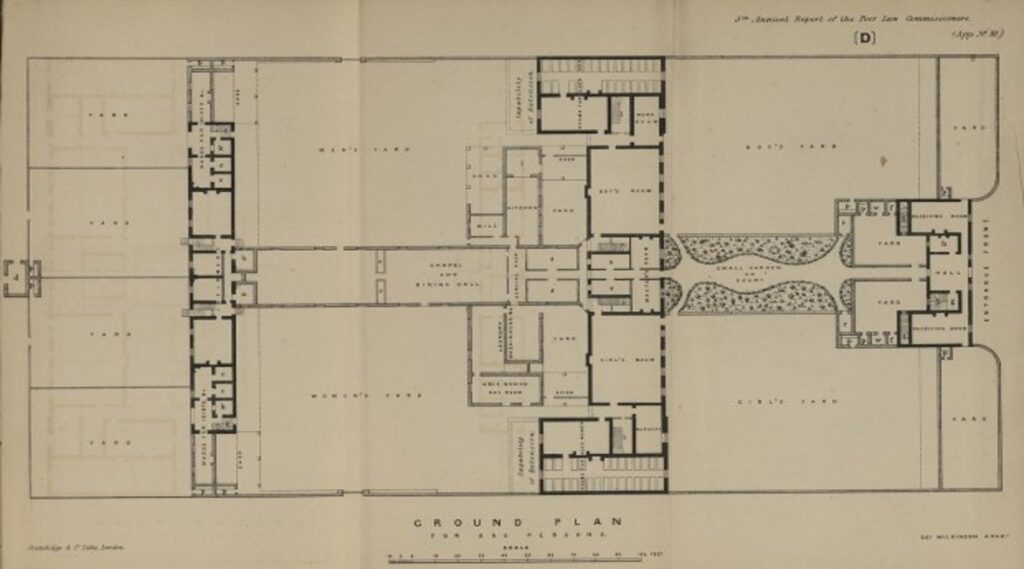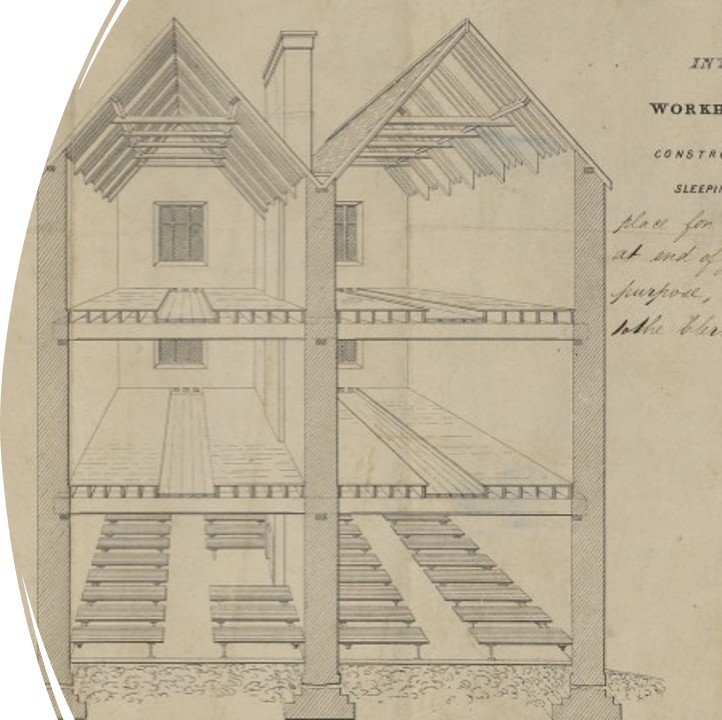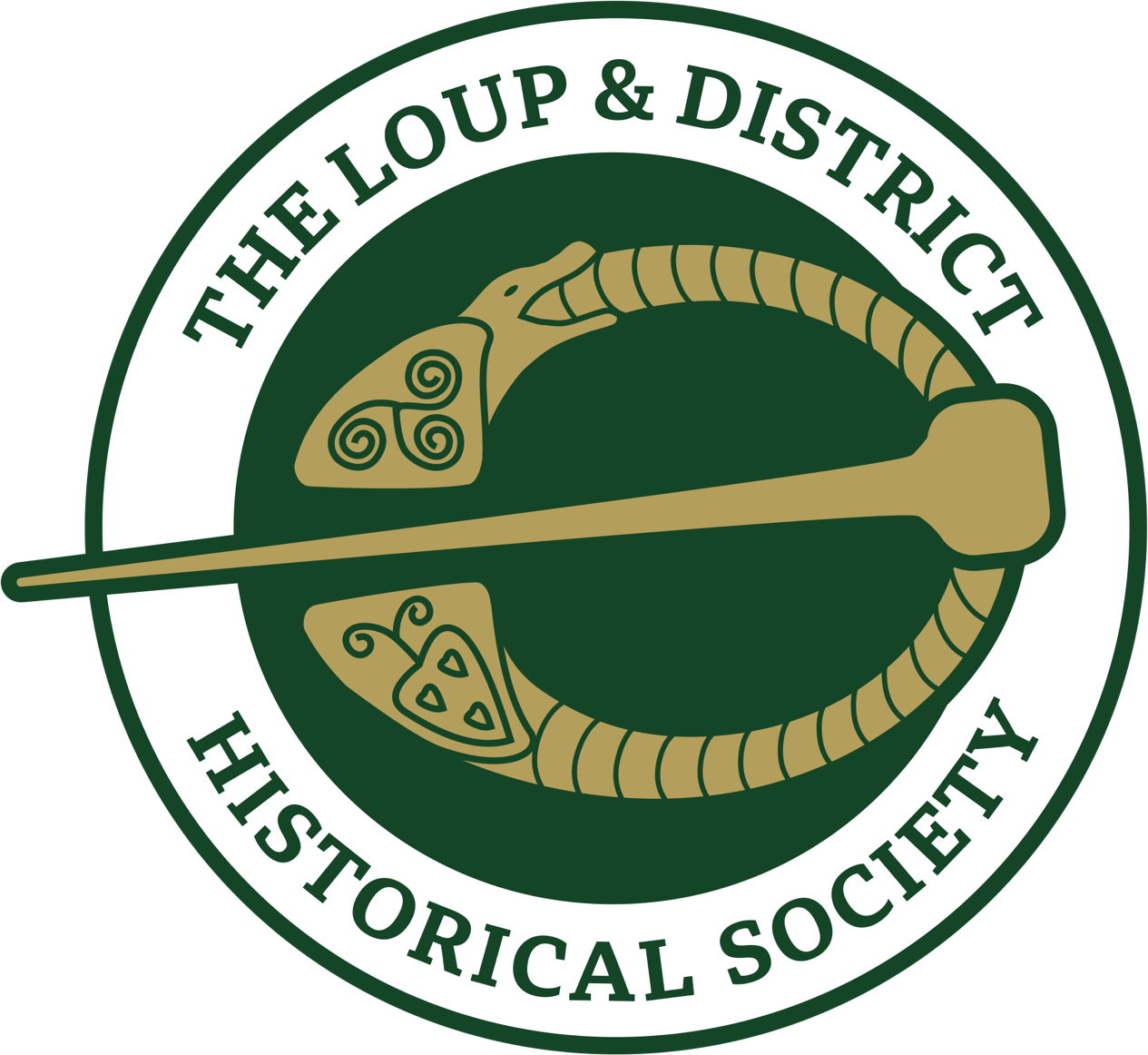
In advance of the building works being completed the guardians met on a monthly basis in the Town Hall in Magherafelt. In February 1840 it was decided to erect a workhouse capable of holding 900 ‘inmates’ (the term given to paupers who resided in the workhouse and which is used throughout the website). A suitable site was identified and a lease prepared with the Salters Company to rent the land for the provision of the poor. After a number of applications, John Millar of Newtownards’ tender was accepted and the work overseen by Leonard Williams. Millar was a popular choice and he was associated with a number of workhouses in the north of Ireland. In all Millar agreed to have the work completed within eighteen months at a cost of £8,100. Other work which was deemed necessary before the workhouse could be open included hiring William Hastings, of Magherafelt, to make a ditch around the workhouse at 6s per Irish perch in order to secure the site. The resulting work made it somewhat of an imposing site in the process.

The first duty of the guardians was to oversee the ratable valuation of the union in order to assess what contributions would be levied on those living within the bounds of the Union. The rates would then be used to maintain the workhouse on a yearly basis. When the valuation was complete the following men were selected as the first collectors of the ‘poor rate’ for the locality: Magherafelt District— John Archer, junior; Draperstown District— Peter Duffy, jun; Maghera District -James Bradley and Bellaghy District, William Tomb.
Advertisements were placed in local newspapers seeking competent land valuers in order to avoid any unrest over the valuation, a task which ultimately fell to Samuel Eason, of Newtown Limavady and James McGowan of Ballinascreen.
Over the course of nine months McGowan and Eason valued all of the land holdings within the union and allowing for a hearings process where farmers could challenge the valuation, arrived at a satisfactory outcome before the official opening of the workhouse. They were assisted in their duties by a committee comprising of Andrew Spotswood, James Henry, John Walker, John Duncan, John Lapentier, J. Rowley Miller, and John Mauleverer.



